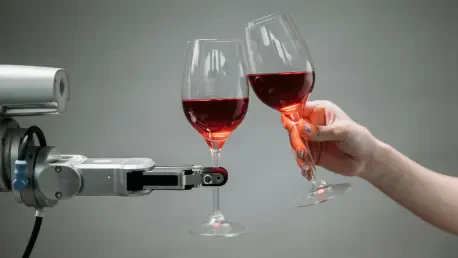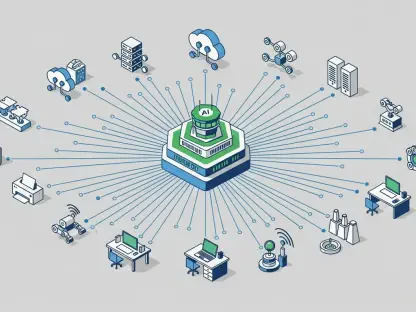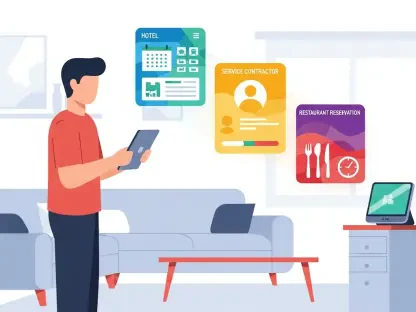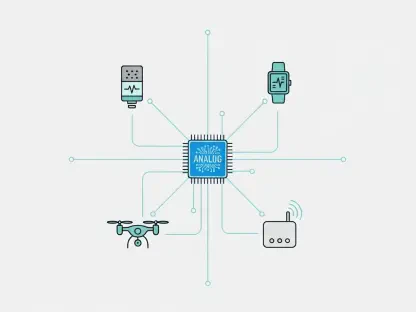The hospitality industry faces unprecedented challenges today, with labor shortages, escalating operational costs, and guests demanding seamless, personalized experiences at every turn. Robotic Process Automation (RPA), a technology that deploys software bots to handle repetitive tasks such as check-ins, billing, and data management, offers a promising solution to these pressing issues. However, integrating RPA into hotel operations is far from a simple plug-and-play process. Success demands meticulous planning, a focus on human elements, and a commitment to continuous improvement. This article delves into the strategies that can help hotels harness the power of RPA to boost efficiency and elevate guest satisfaction. Drawing from recent research and industry insights, the discussion will explore a phased approach to automation, breaking it down into critical stages that ensure long-term value. By prioritizing both technology and people, hotels can transform challenges into opportunities for growth and innovation.
Laying the Groundwork for Automation
The journey to successful RPA adoption begins long before any technology is implemented, with the pre-implementation phase serving as the foundation for everything that follows. Hotels must start by defining clear, measurable objectives that align with broader business goals, such as reducing guest wait times at check-in counters or lowering administrative expenses. Without these specific targets, automation initiatives risk becoming disjointed, wasting both resources and goodwill among staff. A strategic vision ensures that every step taken with RPA contributes to the hotel’s overall mission, whether that’s enhancing service quality or improving financial performance. This initial clarity helps avoid the common pitfall of adopting technology for novelty rather than necessity, setting a purposeful tone for the entire project.
Equally vital in this early stage is the careful selection of processes to automate, focusing on high-volume, repetitive tasks that drain time and energy from staff. Think of activities like entering reservation details or processing invoices—these are ideal candidates for RPA intervention. However, identifying these processes requires detailed mapping to uncover inefficiencies and confirm where automation will deliver the most impact. Stakeholder engagement also plays a pivotal role, as RPA affects everyone from front desk clerks to back-office accountants. Gaining buy-in across departments by framing automation as a supportive tool rather than a job threat can significantly reduce resistance. Conducting thorough feasibility studies to evaluate technical requirements and financial implications further strengthens the plan, ensuring hotels anticipate challenges like IT infrastructure gaps before they become roadblocks.
Executing the Automation Rollout
Once the planning phase is complete, the focus shifts to the implementation of RPA, where precision and adaptability become paramount for a smooth transition. Establishing a dedicated project team is essential, ideally composed of cross-functional members from IT, operations, and management who can oversee the rollout with a unified perspective. This team acts as the backbone of the project, addressing unforeseen issues, maintaining momentum, and ensuring accountability across all involved parties. Their role is particularly critical in preventing delays that could undermine confidence in the automation initiative. By serving as a central point of coordination, the team helps navigate the inevitable complexities of integrating new technology into existing systems, keeping the project aligned with its original goals and timelines.
Beyond team structure, standardizing processes before automation is introduced stands out as a cornerstone of effective execution. Inconsistent workflows across departments can lead to errors when bots are deployed, amplifying rather than solving problems. Hotels that take the time to streamline operations create a stable environment for RPA to function efficiently, minimizing disruptions. Detailed project planning, complete with specific timelines, deliverables, and contingency measures, is another key factor. Such preparation allows teams to respond to challenges methodically rather than reactively. Additionally, documenting automated workflows provides a valuable reference for troubleshooting and training, ensuring that staff can adapt to the system over time. This meticulous approach during implementation helps build a robust framework that supports both immediate results and future scalability.
Sustaining Automation for Long-Term Impact
After RPA systems are operational, the focus must shift to maintaining and optimizing their performance to ensure sustained benefits for the hotel. Continuous monitoring emerges as a critical practice, with tools like real-time dashboards enabling managers to track system health and detect anomalies before they affect guest experiences or internal operations. This proactive stance helps maintain service standards by addressing potential issues swiftly, whether it’s a glitch in automated billing or a delay in data updates. Regularly reviewing performance metrics such as error rates, time savings, and cost reductions provides concrete evidence of RPA’s value, validating the investment while highlighting areas for improvement. This data-driven evaluation ensures that automation remains a strategic asset rather than a static tool, adapting to the hotel’s evolving needs.
Equally important in the post-implementation phase is the commitment to ongoing staff development, as employees must remain equipped to work alongside automated systems. Beyond initial training, offering regular workshops and refresher courses helps personnel stay current with updates and refine their skills in interacting with RPA tools. Strong support mechanisms, such as internal helpdesks and clear escalation protocols, are also indispensable for resolving unexpected challenges efficiently. Treating RPA as a mission-critical component of operations—through routine maintenance, software updates, and performance audits—prevents system degradation over time. Hotels that embraced these practices in past implementations found that consistent care for both technology and people translated into reliable, long-term outcomes, reinforcing the importance of vigilance well after the initial rollout.
Reflecting on the Path to Automation Excellence
Looking back at the efforts of hotels that tackled RPA adoption, it’s evident that a balanced approach yielded the best results. Those that meticulously planned in the early stages, executed with precision during rollout, and committed to sustained monitoring afterward often saw significant improvements in efficiency and guest satisfaction. The emphasis on aligning automation with organizational goals, engaging staff at every step, and maintaining systems through regular updates proved to be a winning formula. For hotels now considering or refining their automation journey, the next steps involve assessing current processes for automation potential and investing in training programs to build a tech-savvy workforce. Exploring partnerships with experienced RPA vendors can also provide tailored solutions that address unique operational needs. By learning from past successes and staying adaptable, the hospitality industry can continue to leverage automation as a powerful tool for navigating an increasingly competitive landscape.









